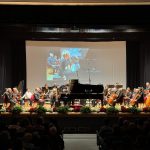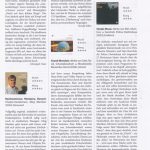CLASSICALSOURCE—MUSSORGSKY Pictures at an Exhibition—piano version, orchestral version (orch Ravel)
Oleg Marshev pf Odense Symphony Orchestra / Jan Wagner Danacord DACOCD656 (70′.DDD)
Although this release is not the first to juxtapose Pictures at an Exhibition in Mussorgsky’s original version for piano with Maurice Ravel’s orchestration of it (Ashkenazy/Mehta, on Decca, and Brendel/Previn, on Philips, spring immediately to mind), it is instructive to have two versions of this popular work side-by-side and, in particular, an opportunity to savour how the composer himself wrote the piece (there are so many transcriptions of it that there is a danger of losing sight of Mussorgsky’s intentions!) Oleg Marshev gives a particularly illuminating account of Mussorgsky’s original (beautifully recorded, too, in its presence, clarity and balance). Marshev’s approach to the linking ‘Promenades’ is particularly thoughtful and varied, and his characterisation of the canvases themselves is descriptive enough without losing the line of the work as a whole. It’s an impressive performance, overall, avoiding extremes, quite symphonic yet not denuding the pictorial elements and played with plenty of feeling; a strong candidate as a ‘library choice’.
This may have been a good chance to not record Ravel’s scoring of Pictures; for however brilliant and masterly the Frenchman’s orchestration is, it is so often played that one of the others might have made an appearance. Nonetheless, this performance from Odense is quite individual, rather too measured in the first ‘Promenade’ (and elsewhere) – maybe – but always interesting in that Jan Wagner eschews a flashy, showpiece approach to music (in Ravel’s version) that can all-too-easily be taken for granted. Certainly there seems to be a concern to paint in orchestral sound rather than use the music for ‘concerto’ purposes, and if some of the Pictures can seem a little too careful (pedestrian, even), Wagner’s deliberate approach (save, frustratingly, in ‘Bydlo’, although Marshev is also on the quick side for lumbering oxen!) does pay many dividends, and the Odense Symphony Orchestra (cleanly recorded in a discernible acoustic, the same space is rather curtailed for Marshev) is well-prepared and boasts some fine soloists. Some listeners might find that Wagner’s interpretation is too analysed and they may also miss the quicker section’s deftness and require greater colour. But Wagner also creates the sense that this is a related gallery, an occasion to step back and admire Victor Hartmann’s paintings with more time than we usually have, for Jan Wagner seems as concerned with the mechanics of the music as with the overall result. It’s good to hear Ravel’s version given with this amount of time, space and dignity – and Marshev’s account of the piano original is particularly rewarding.
Colin Anderson


